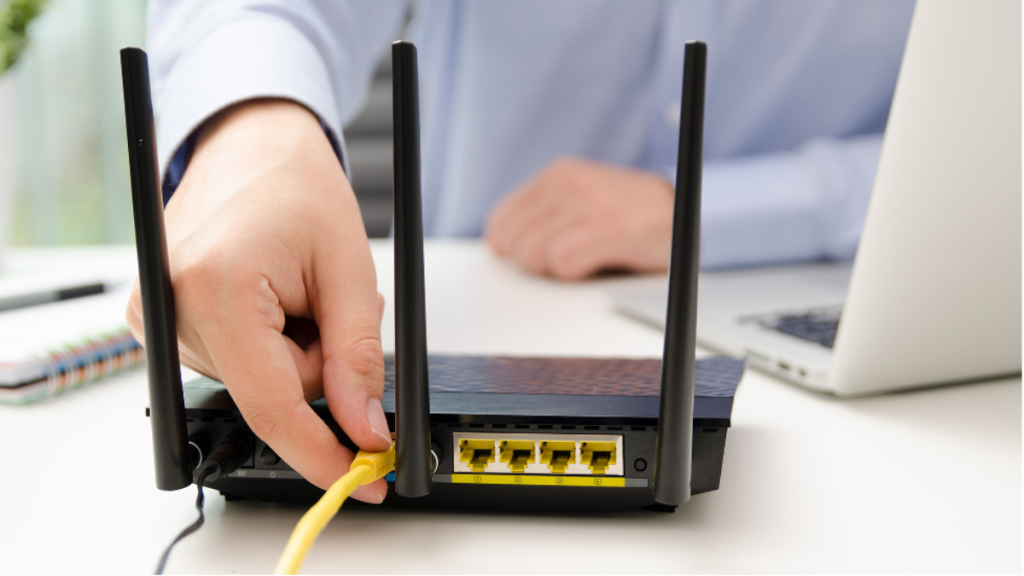We all have to depend on our home Wi-Fi for paying credit bills, working, studying, online banking, reserving flight tickets, shopping, or chatting with friends. Every gadget these days, from the computer to the AC is connected to the Wi-Fi.
Sure, this is a huge benefit. But if you are not careful enough, your router can become the playground for scammers, cybercriminals, and hackers. Even a small vulnerability in the router can give access to almost all devices that are connected to it. What’s even scarier is that a hacker can get their hands on your credit card or bank account details.
A router gets a virus when malware gets through the login for modifying the setting. It might also happen when it tries to bypass the firmware of the router for modifying software. Vulnerabilities, such as unsafe practices or outdated firmware can expose your router to risks.
How you protect your routers is completely on you. But here are a few methods that can help you out.
● Change the Default Name and Password
The first step is to change the service set identifier or SSID of the router. In simple words, you should change the default name and password of the router.
Usually, the company’s name is set as the default name of the router. When any computer searches for wireless networks nearby, it lists every network that broadcasts its name publicly. It gives the hacker the chance to break into the network. So, you should change the name to something that doesn’t disclose any personal details. You should also change the default password. This will help in throwing the hackers off their mission.
● Enable Network Encryption
Almost every wireless router has an encryption feature. But it is usually turned off, by default. Thus, you should turn on the encryption setting of the router to secure the network. Turn it on as soon as the broadband installs the router. One of the most popular encryption available for a router is WPA2.
● Update Your Router
You should also check for router updates and apply them as and when they are available. If you don’t update the firmware, it will make your router vulnerable to malware and viruses. In case you find it difficult to update your router on time, you can set it to download and install the firmware, automatically. This will save you a lot of time.
● Use a Good Firewall
You can also protect your router with the help of a firewall. It has been designed to protect systems from viruses, malware, and other intrusions. Most of the time, wireless routers come with built-in firewalls. But they might be delivered to you with the firewall turned off.
Check if the firewall of the router is turned on. If your router doesn’t have a firewall, install a good firewall on your system to protect it from malicious access.
● Use a Unique Wireless Network Password
Like we already said, most wireless routers come with a default password. But the hackers can easily guess it, particularly when they know the manufacturer of the router. So, when you are choosing the password for the wireless network, check if it has 20 characters, including letters, numbers, and special characters. The more complicated is your password, the trickier it is for the hackers to break into the network.
● Switch Off Your Network Name Broadcasting
Disable the network name broadcasting. If someone is searching for a wireless network, the search shows them a list of networks that they can choose from. When you disable broadcasting, your network name is not going to show up. Hence, your Wi-Fi name won’t be visible to those who do not know how to look for it.
The trick helps businesses, such as restaurants, hotels, or libraries who don’t want the general public to use their Wi-Fi connection.
Using a VPN for Your Router is the Most Effective Solution
Install a VPN to encrypt and secure your router. One of the major benefits of using a VPN for your router is that all the devices on the router’s network will be protected by the VPN. It is more useful than you know. You might have many smart devices in your home that can’t be configured to use a virtual private network. But if you install the VPN on your routers, all these devices will be protected.
Apart from offering protection, https://thefastvpn.com/ will also let you get around device restrictions from many VPN brands. Some companies let you connect up to 5 devices to the VPN at the same time. But if you install the VPN on your router, no matter how many devices you are connecting to the VPN through the router, it will count as one.
How Does a VPN on a Router Work?
A VPN will create an encrypted tunnel and secure the router. It collects the request from the device to access the internet and then directs them through the encrypted tunnel.
Once you set up the VPN on your router, any device connected to it will have its network traffic sent through the encrypted tunnel. So, your laptop, desktop, smartphone, or TV will be protected by the VPN. Thus, it will protect devices that do not support VPN coverage all by themselves. Security is always important, regardless of the device you are using.
Bottom Line
Your router is the bridge between you and the computer. Infecting it with viruses can be lucrative for cybercriminals. Malware on the router might spread to any device that is connected to it. Also, if your phone or desktop contains a virus, it can infect the router. Follow the measures given above to protect your router.
If you decide to use a VPN for a router for your desktop to prevent it from infecting the router, choose Thefastvpn.com. It will help you stay private and secure. No one will be able to see through the tunnel and get their hands on the available data.
